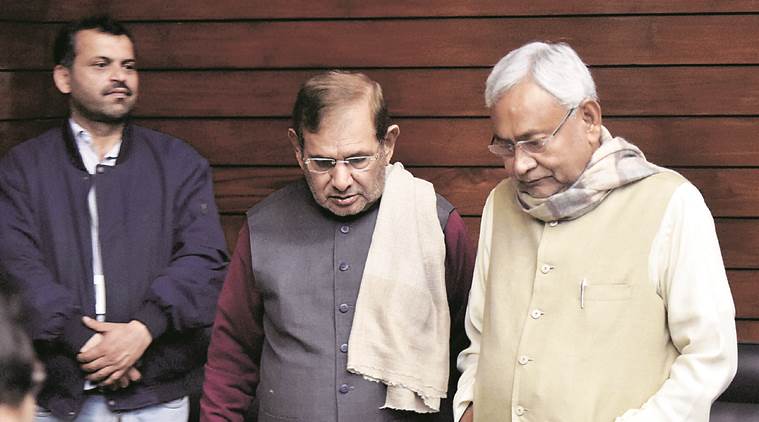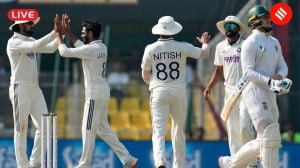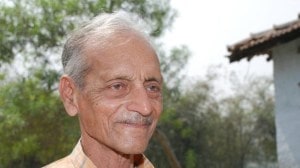Stay updated with the latest - Click here to follow us on Instagram
JD(U) to replicate Bihar’s Grand Alliance model
To engage with non-NDA parties for forging a new alternative, may impact polls in West Bengal, Assam
 New Delhi: Bihar Chief Minister Nitish Kumar with JDU President Sharad Yadav arrive for Party Executive meeting in New Delhi on Sunday. PTI Photo by Atul Yadav(PTI12_20_2015_000071B)
New Delhi: Bihar Chief Minister Nitish Kumar with JDU President Sharad Yadav arrive for Party Executive meeting in New Delhi on Sunday. PTI Photo by Atul Yadav(PTI12_20_2015_000071B)
Self-assured after its victory in Bihar, the Janata Dal (United) national executive on Sunday resolved to replicate the state Grand Alliance model in five states that are headed for assembly elections next year. The party decided to work for the formation of a larger national alternative of like-minded parties to the ruling BJP-led NDA.
The meeting was chaired by party president Sharad Yadav and attended by Bihar Chief Minister Nitish Kumar and other senior leaders.
JD(U) general secretary K C Tyagi, who briefed the media after the meeting, said, “The days of single-party governments, except for the BJP, are over.” He said his party would engage with non-NDA parties for forging a new alternative.
He neither spelt out the contours of the proposed alliance nor the manner in which the party planned chasing this goal.
However, this stance of the JD(U) reflected one unambiguous point —the party had no plan to get under the Congress wings right away by joining the UPA, led by Sonia Gandhi.
Tyagi dodged the crucial question vis-a-vis Nitish’s claim over the leadership of the proposed formation because it could bring the JD(U) in conflict with other parties, particularly the Congress. In reply to a question, Tyagi said Nitish was indeed “prime ministerial material” as well as “the most competent and honest chief minister in the country”. He said only this much, adding that the JD(U) believed that his performance in Bihar would also impact national politics.
The list of election-bound states includes Assam, West Bengal, Tamil Nadu, Kerala and Puducherry. Although the JD(U) does not have any sizeable organisational base in any of these states, the party leadership has the capacity to influence the sizeable migrant population from Bihar in West Bengal and Assam. As far as West Bengal is concerned, the first choice for Nitish is clearly Chief Minister Mamata Banerjee. Unless the Trinamool Congress leader chooses to tie up with the Congress, which appears unlikely, Nitish would side with her in preference over the Congress. This means, no Grand Alliance in West Bengal.
However, Assam is a different ball-game. There, Nitish has already got into his act. He has taken an initiative to get the Congress on board an alliance with the Asom Gana Parishad (AGP) and the All-India United Democratic Front (AIUDF) led by Badruddin Ajmal.
The JD(U) drive, as Tyagi said, was on account of the fact that “Assam is the only state from amongst the poll-bound states where the BJP can win, considering its Lok Sabha poll success”. “Therefore,” he said, “it must be stopped”.
The onus for defeating the BJP was on the Congress. “As the biggest party in Assam, the Congress has the biggest responsibility (for carrying others along) as well,” he said, while pointing out that the JD(U) also had to “make sacrifices” in Bihar by giving away even the seats held by it to its new allies.
The argument did carry weight, considering that the Congress, which got to contest 41 of the 243 assembly seats, was the biggest beneficiary of the JD(U) stance.
The national executive also adopted a resolution for approaching the Election Commission with a request for changing the party’s election symbol, a horizontal “arrow”, because it resembles the symbols of Shiv Sena and JMM. “We lost five seats in Bihar polls because of the confusion created by these two parties,” Tyagi said. The party wants to adopt the old symbol of “wheel”.







